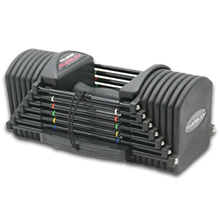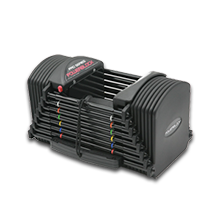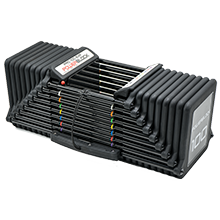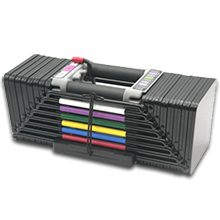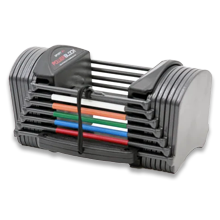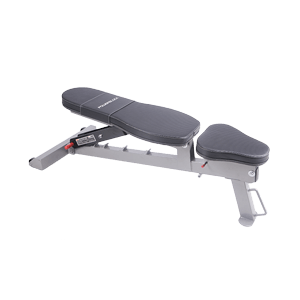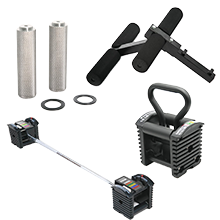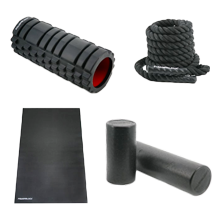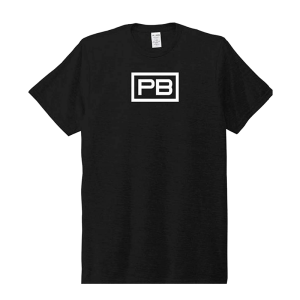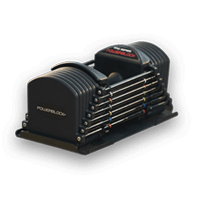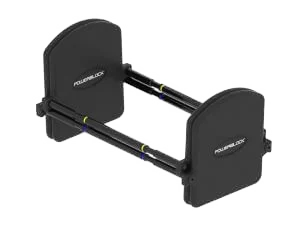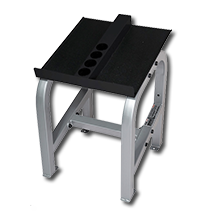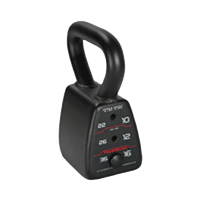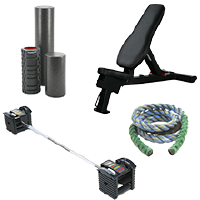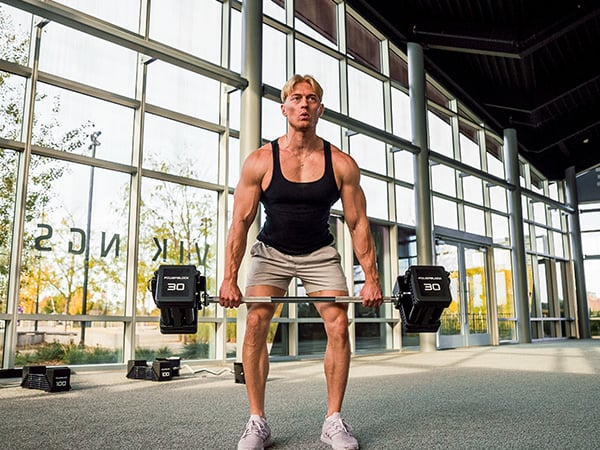
How to Properly Lift Weights: Tips for Weight Room Safety
Weightlifting is great for a wide range of people, no matter if you are an active athlete or are adding strength training to your routine. Taking the time to learn how to correctly lift weights will help you get the most out of your workout while also keeping you safe. Read on for tips on what to do before, during and after lifting weights to get the most out of each session.
Prep Before You Lift
Basic preparation can go a long way towards ensuring a good workout, especially if you are new to weightlifting. Even small things like what you wear and how you start and end your workouts can be important.
1. Choose Proper Clothing
Let’s start with your feet. While some people prefer to buy weightlifting-specific shoes, they certainly aren’t a requirement. The most important thing about whatever shoes you wear is that they are fully closed for protection and have good traction and support. Similarly, you don’t necessarily need clothes specifically designed for working out—anything that is breathable, comfortable and allows for a full range of motion will do.
2. Treat Your Muscles Right
One of the most common ways to injure yourself while lifting weights is to skip your warm-up or cool down. Make sure to spend some time activating your muscles with stretches and light aerobic exercise before strength training. Stretching at the end of a workout helps your body wind down and keep your muscles from tightening up. Focus on the muscle groups you worked out while stretching to help reduce excessive soreness or tightness the next day.
3. Get the Right Weights Before You Start
Lifting the proper amount of weight is the best way to start building muscle without overloading yourself. Lifting too heavy or too often — or both — can lead to injuries, some that could be serious enough to keep from working out for a long time. If you aren’t sure how much you can lift for different exercises, adjustable dumbbells are an excellent, space-saving solution. And if you aren’t sure which set will work best for you, we can help!
4. Clear Your Space
If you work out at a gym, make sure to keep your space clear of clutter, including extra weights, water bottles or bags. If you lift weights at home, ensure that you have enough clear space to correctly and safely perform all the necessary movements for each exercise. If you live in a smaller space and need some ideas for creating an ideal workout environment, check out this handy guide.
Always Lift With Proper Technique
Using correct technique is one of the most important things you can do to get the results you are working for and alleviate safety concerns when lifting weights. While learning how to correctly lift weights from a professional is ideal, there are a few positioning and form basics that everyone should know.
1. Foot Placement
The most common position for your feet, especially for standing dumbbell workouts, is about shoulder width apart. This gives you a solid base for both balance and mobility without causing excess or unnatural strain.
2. Hand Grip
For safety and to correctly target specific muscle groups, some lifts require you to grip the weight in different ways. The three main grip techniques to know are:
- Underhand grip is where you hold the dumbbells or bar with your palms facing up — most often used during curls or similar pull exercises.
- Overhand grip constitutes holding the dumbbells or bar with your palms facing down — used mostly for pushing exercises like rows.
- Neutral grip is when you hold dumbbells with your palms facing each other — can be used for various flys, presses and even some curls.
Your grip strength is also important to consider. No matter what style you are using, your grip should be firm and tight, but not so tight your forearm gets fatigued while working other muscles. Always rest the weights across your palms rather than your fingers to get the most support as you lift.
3. Conscious Breathing
In general, it is best to inhale when releasing tension and exhale when working. For example, when doing dumbbell curls, inhale when you bring the weights down and exhale when you curl.
4. Consistent Pacing
Go slow! There are no prizes for finishing your set early and rushing through an exercise can lead to injuries, poor form or both. Concentrate on your form and completing each movement correctly rather than on pushing the pace.
5. Common Mistakes to Avoid
There are a few technique mistakes that can cause issues for weightlifters of all experience levels:
Arching Your Back
While you’ll see some high-level weightlifters arching their back while completing different lifts, doing so can severely injure your back in the long run. This method of lifting is not recommended for most people — back injuries are common in this context and too much reliance on your back will limit the growth you see in other muscle groups.
Using Momentum
Momentum can give you the boost you need to lift heavier weights than normal, but it often comes at the price of poor form and potential injury. In the vast majority of cases, lifting slower and with complete control is safer and more beneficial for your long-term goals.
Overextending Joints
When using dumbbells, or any other free weights, there is real potential for overextending your joints if you don’t use correct technique. Overextended shoulders and elbows are some of the most common issues for weightlifters of all experience levels, especially when technique comes secondary to weight increases and high repetitions.
Create a Lifting Routine
No matter what your strength training goals are, creating a routine that is geared towards hitting those goals is a great way to structure your workouts and ensure you don’t push your body too hard.
The first step in any routine is actually deciding what you want to achieve. Strength training goals often include increasing the amount you can lift, strengthening your bones, preventing injuries and improving both balance and mobility — many people often have more than one of these goals in mind, among others.
Your main goals will determine the amount of weight you lift, but figuring out where you do need to start — and how to progress — can be a challenge. Beginning with bodyweight, even for simple exercises, is never a bad decision and by careful exploration you’ll be able to find a comfortable weight for each exercise. For those working out at home, investing in adjustable dumbbells can make it easier to get weights you need for multiple exercises without overtaking your home with equipment.
Find Your Perfect Set of Adjustable Weights
With goals and weights in mind, you can structure your workouts more easily. It may help to fine-tune your regime, including frequency and intensity, with a professional like a personal trainer or physical therapist, but no matter what, remember that rest is an essential part of muscle growth and strength training. A good rule of thumb is to never work the same muscles two days in a row and to include at least one or two days of rest in your weekly schedule.
Avoiding — and Dealing With — Injuries
As with any exercise, injuries are a risk while strength training. Most often, minor injuries occur when muscles and joints are overused, there is too much weight or people use incorrect form. While often we think of weightlifting injuries as soreness or inflammation that clears up in a few days or weeks, there is also the possibility of tears, ruptures and other more serious issues. There is no way to guarantee an injury won’t occur, but by sticking to your plan and not pushing your body past the outer limits of its capabilities, you’ll limit the chances of major complications.
If you do get injured, even if it is unrelated to weightlifting, seeking proper medical advice and giving your body the rest it needs are two of the best things you can do to get back to lifting as soon as possible. Take the time to reassess your goals and weightlifting plan — while it may not be nearly as satisfying as working out, this can keep you motivated to allow your body to fully recover so you can hit the ground running when you’re cleared to get back to lifting.
Frequently Asked Questions About Proper Weight Lifting
Can I lift weights every day?
No, rest and recovery days are vital for both muscle growth and preventing injuries. Incorporate days of rest or light activity (like walking) into your workout plan.
How long should I lift weights in one session?
Between 20 minutes and an hour, depending on how often you work out and your individual plan.
How do I know if I’m using correct weightlifting form?
The easiest way is to consult a professional. However, if this isn’t an option, filming or watching yourself perform a lift and comparing it to a reputable video or visual guide can be informative.
I’ve never lifted before, is it too late to start?
No! People of all different ages and lifestyles start lifting every day.
When should I increase the weight I’m lifting?
When you notice the last few reps of a set are easy and you can easily do one or two more with proper form, go for an incremental weight increase. It can take between two to four weeks — or more — to build up the strength needed to safely add more weight. A set of adjustable dumbbells, especially a set that can expand as you get stronger, will make these gradual weight increases easy and save space. For even more micro adjustments, adder weights give you the option to increase your weight by 2.5 lbs.
Stay Mindful and Motivated
No matter if you go to a gym or prefer working out at home, it only takes a few small steps to decrease your risk for injury while lifting weights. Preparing for each workout and following a plan that is balanced between activity and rest days is vital for avoiding injuries.
Most importantly, welcome to your weightlifting journey! Strength training is not only a great way to get exercise, but can be enjoyable as well. Learn to find encouragement in the small improvements and signs you are getting stronger — this will keep you motivated to stick with your plan and avoid the temptation to lift too heavy or too often. PowerBlock is here to help during every stage of the process, whether you’re looking for new exercises to add to your routine, video examples or an equipment upgrade, we’ve got you covered.
